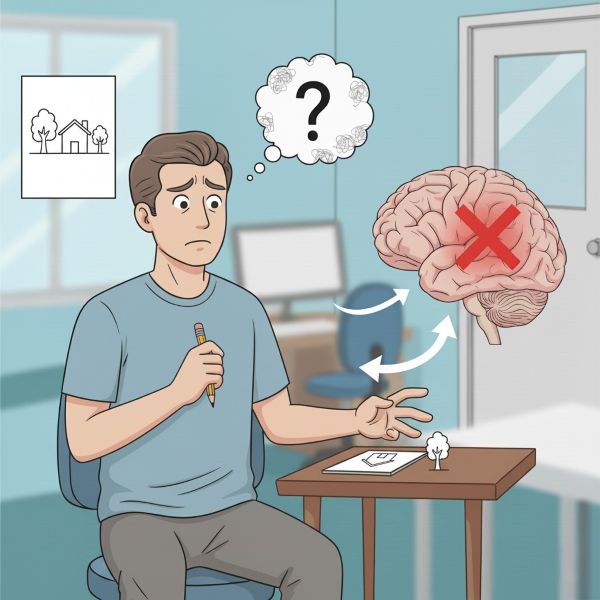Allochiria
Definition and Clinical Features
Allochiria (from the Greek for "other hand") is a specific type of spatial error where objects from one side of space (usually the neglected left side) are transposed to the opposite side. For example, when asked to copy a drawing of a house with a tree on its left, a patient with allochiria might draw the house correctly but place the tree on the right side instead.

In allochiria, elements from the neglected left side of a model are incorrectly transposed to the right side of the patient's copy.
Clinical Significance and Anatomical Basis
Allochiria is a striking manifestation of visuospatial neglect. It is typically seen following damage to the right cerebral hemisphere, particularly involving the frontoparietal regions. The phenomenon highlights a complex disruption in spatial processing, where an object is detected but its location is incorrectly mapped to the non-neglected side. It should be distinguished from related mislocalization phenomena like alloesthesia (a sensory stimulus on one side is felt on the other) and allokinesia (moving the contralateral limb when asked to move the ipsilateral one).
References
Halligan PW, Marshall JC, Wade DT. Left on the right: allochiria in a case of left visuospatial neglect. Journal of Neurology, Neurosurgery and Psychiatry 1992; 55: 717-719
Cross References
Alloesthesia; Allokinesia; Neglect

